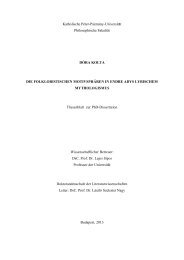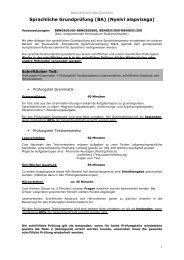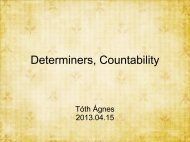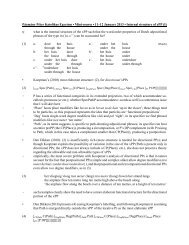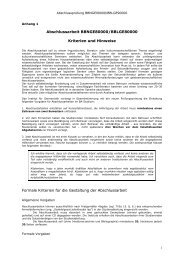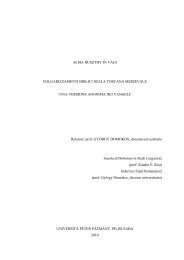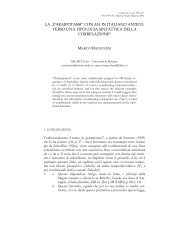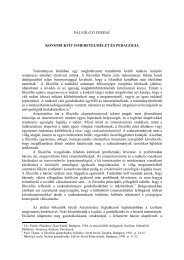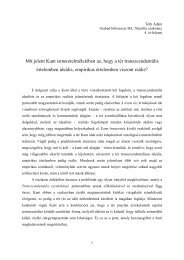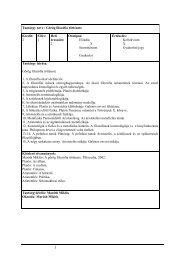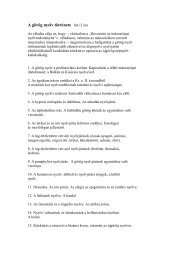“Ambisyllabicity” across word boundaries:
“Ambisyllabicity” across word boundaries:
“Ambisyllabicity” across word boundaries:
You also want an ePaper? Increase the reach of your titles
YUMPU automatically turns print PDFs into web optimized ePapers that Google loves.
(6) a. hit Ann<br />
c v C V C v c v cV C V<br />
| | | | |<br />
h t n<br />
b. hit Ann<br />
c v C V C v cV C v<br />
| | | | |<br />
h t n<br />
3 The analysis<br />
My point of departure will be the observation that ‘ambisyllabicity’ <strong>across</strong> <strong>word</strong> <strong>boundaries</strong> is<br />
restricted to situations involving a vowel-initial <strong>word</strong>; <strong>word</strong>-final plosives, for example, are<br />
never reinterpreted as to their syllabic position when a liquid-initial <strong>word</strong> follows even if that<br />
plosive-liquid cluster would qualify as a possible branching onset in the language (cf.<br />
Kenstowicz 1994: 281). For instance, although /tr/ is a possible onset cluster in English, as in<br />
tray, where the /t/ is aspirated (or equivalently the /r/ is voiceless), the final /t/ in hit will not<br />
the least aspirate in e.g. hit Ray. What this might suggest is that it is a characteristic of <strong>word</strong>initial<br />
vowels (irrespective of whether they are stressed or not) to capture <strong>word</strong>-final<br />
consonants. Somehow they are ‘frustrated’ by not having an onset, and this ‘frustration’ – I<br />
claim – comes from their inability to exert their governing potential.<br />
Recall I am trying to keep licensing strictly local, which means that I assume it to hold<br />
on the CV (or VC) tier, between adjacent positions. Thus, the only power emanating from the<br />
<strong>word</strong>-initial vowel that can reach the consonant is government. In addition, I suggest that the<br />
government whereby a vowel affects a preceding consonant operates on the melodic level 10 –<br />
another effort made to retain strict locality: notice that a <strong>word</strong>-final consonant is adjacent to<br />
the vowel starting the next <strong>word</strong> on the segmental level. Cf. (7).<br />
(7) hit Ann<br />
c v C V C v cV C v<br />
| | | | |<br />
h t n<br />
In (7), it is of no crucial importance whether vowel initial <strong>word</strong>s are endowed with a<br />
single c or the ‘canonical’ cv boundary marker; the vowel’s licensing cannot reach the<br />
position of /t/ in either case, the relevant melodies, however, will be adjacent independently of<br />
the CV tier.<br />
In (8) a situation involving a consonant-initial <strong>word</strong> is illustrated: the empty v in the<br />
boundary marker must be silenced by proper government, so the <strong>word</strong>-initial consonant will<br />
be licensed only – therefore be in a phonologically strong position. (So far the present analysis<br />
agrees with those of Coda Mirror or Coda Mirror Plus, so the aspiration of t’s in this context is<br />
predicted in the same way.)<br />
10 Proper Government, another form of government, silences vocalic positions and is traditionally assumed to<br />
operate on the level of nuclear projection. We have no reasons not to accept that assumption.



